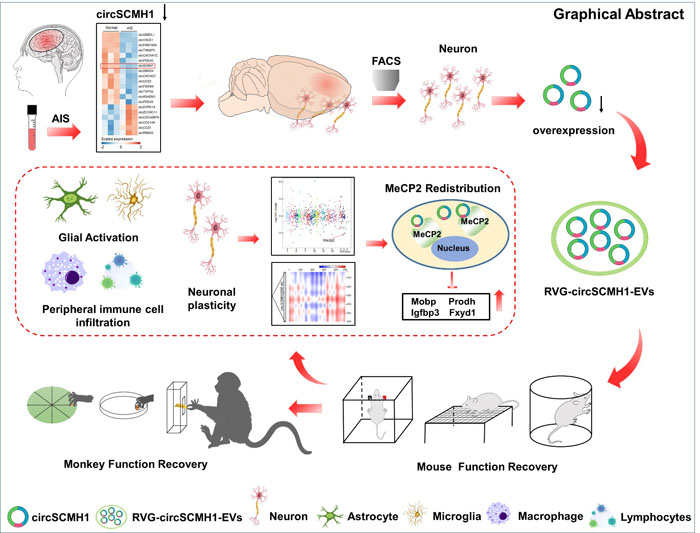Stroke is the third most common cause of mortality and often leads to long-term disability with no efficient clinical therapy in place. In 80% of cases, stroke is diagnosed as ischemia induced by thrombotic occlusion of cerebral arteries or branches. A variety of circular RNA (circRNAs) molecules are known to function in ischemic brain injury. In a recent study published in Circulation, researchers from Medical School of Southeast University and Kunming Institute of Zoology (KIZ), Chinese Academy of Sciences (CAS) presented a potentially widely applicable nucleotide drug delivery technology. They demonstrated that the basic mechanism of how circRNAs can be therapeutically exploited to improve post-stroke outcomes. The researchers screened circular RNA SCMH1 (circSCMH1) from the plasma of acute ischemic stroke (AIS) patients using circRNA microarrays and engineered RVG-circSCMH1-extracellular vesicles (RVG-circSCMH1-EVs) which selectively deliver circSCMH1 to the brain. They found that circSCMH1 treatment improved functional recovery post stroke in both mice and monkeys, and discovered that circSCMH1 enhanced the neuronal plasticity and also inhibited glial activation and peripheral immune cell infiltration. Mechanistically, circSCMH1 binds to the transcription factor MeCP2, thereby releasing repression of MeCP2 target gene transcription. The study, titled Extracellular Vesicle-Mediated Delivery of CircSCMH1 Promotes Functional Recovery in Rodent and Nonhuman Primate Ischemic Stroke Models, was published on Circulation on May 22, 2020. Website link: https://www.ahajournals.org/doi/10.1161/CIRCULATIONAHA.120.045765. The monkey study was supported by the National Key Research and Development Program of China (2018YFC1313803), Yunnan Key Program of Science and Technology (2017FA042) and the National Science Foundation of China (31771194, 31571109). 
(Imaged by YANG Li and HAN Bing) (By WANG Jianhong, Editor: YANG Yingrun) Contact: YANG Yinrun yangyingrun@mail.kiz.ac.cn |
